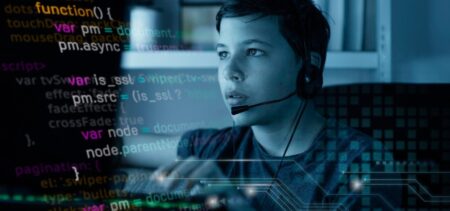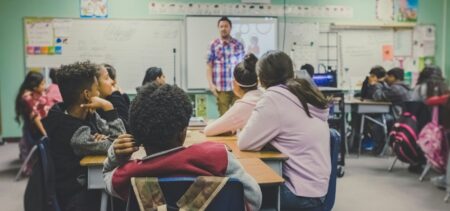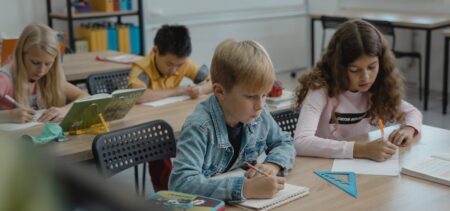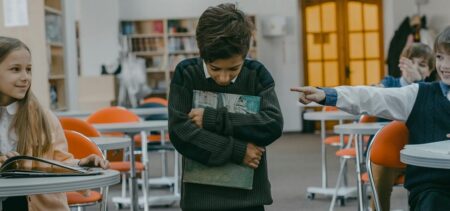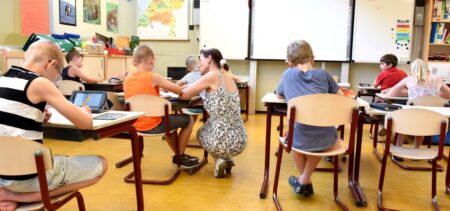Numerous sources have approached technology in education from the angle of its direct interaction with the learning process. We all aware that a new generation emerges, one that has grown up with technology all around. Educational strategists constantly explore, analyze, praise or dispute new ways of introducing modern tech into education.
Nevertheless the current and evolving technology also influences education in indirect ways that we may only be partially aware of.
One of the indirect results of technology having its say over education consists of the disruptions caused by the first on the labor market, in the field of professions, occupations or activities.
How does technology disrupt the workforce environment?
Regardless of whether the professionals are employees, business owners or freelancers, the disruptive effects of tech progress take their toll by causing the disappearance of jobs and by strongly re-modelling others. And by ‘disappearance” we don’t mean job cuts, but rather the fact that some functions are taken over by applications, software or automated hardware.
What happens when the educational process prepared the people who lose their jobs only for a particular, narrow field, in which they further specialized and gained experience and which is suddenly taken over by technology? The human element, as well as the social system meets a huge dilemma. Professional re-conversion is an option, but it takes time and money, and the people who go through this must be able to start all over again in a new situation. What if the next month or next year their new profession will be swallowed by an efficient robot or a progressive neural learning software – will they start all over again – one more time?
Even since a few years’ ago, the inherent difficulties to this situation have been accounted for by leaders, as well as by the specialists and by those affected. Here is an example of how the constantly chaotic modern workforce environment looks like via the VUCA concept, an acronym synthesizing:
- Volatility;
- Uncertainty;
- Complexity;
- Ambiguity.
If you thought such disruptive times might be over, think again. Although it is rather obvious that in a world talking about the impending Third Industrial Revolution change is yet to come, and it will probably manifest itself in sudden waves, the skeptical might take a look at a study-case approach to the present situation of everyday people, confronted with job volatility and with the new upgraded requirements in the work field. Even looking for a job can be a challenge, when it suddenly involves new tech skills that the candidates have to learn by themselves or pick up while they try joggle financial restraint, feeling of obsolescence or desperation and go through an active job-seeking process. It is also true that new functions and opportunities emerge, since many of today’s jobs (about a half of them) did not exist 25 years ago, but nevertheless adaptability to the new demands is the key as well as the burden for those who have to reconfigure their professional lives.
The agile model in education – a possible solution
In view of this volatile jobs’ situation, some have considered re-configuring education from its core, following an IT dev model – the agile education model. Serving precisely in anticipating constant changes and readjusting requirements, the agile model also migrated into marketing and also influenced other types of activities, since it tends to imprint a certain way of thinking on those who have worked with it.
Rather hard to describe, since it functions in sub-clusters and distributes information in a way that allows more re-grouping models later, according to the necessities, the agile model arrived into the educational process for a while now, although it feels more like a niche model.
Do you remember the previously quoted VUCA? The talent management specialists that put together this model also came with an agile solution, since it would prepare everyone for a wider range of options right from the start. Some of the characteristics of agile learning would be these:
- Training to solve unanticipated problems;
- Rapid individual and group learning;
- The self-obsolescence of processes that allows quick replacements and upgrades;
- Focus on innovation.
One of the basic ideas that the agile concept integrates is that while you cannot fight chaos, people and teams can adapt to it and learn how to manage themselves and their skills even in a constantly changing environment.
Developing an agile education mindset presumes:
- Divergent, anticipatory and creative thinking;
- Empathy (as a guiding tool through uncertainty and ambiguity);
- Strong social and EQ (emotional intelligence) capabilities and skills;
- An entrepreneurial view of the ensemble that would put all activities into perspective and support the creating of real value;
- An above-average way of thinking and solving problems that would make replacing the human factor by automated machines unfeasible;
Another active author on the topic of agile education is Steve Peha, whose 2011 article on agile schools underlines how education should prioritize individuals and interactions over processes and tools, meaningful learning over learning statistics and measurements, as well as the very important agile mechanism of responding to change over following a plan (the embrace-the change/chaos-and-work-with-it approach).
Another trait of the agile education concept consist in breaking the massive, centralized responsibility
into smaller, individual responsibility nodes where each person is making decisions for, is involved and accountable for the task it delivers. The group comes together through the unified upper goal of all the individual contributions, but these fragmented contributions are each holding an ultimate importance for the persons performing them. Re-configurations and changes just determine different arrangements within the structure, each group member continuing to bring its contribution and perhaps reassembling the gained knowledge and working at a micro-level.
Applying this in the educational process would mean no effort during the learning process would be wasted, just integrated into the needed structure once the proper mindset is also taught.
Although agile education has not fully entered the mainstream educational databases, the Agile Learning Centers network is functional and present in North America – as you may see here. If interested in further details on this educational model, the presentation page of this network is more than explanatory and also invites people to visit the nearest ALC (agile learning center).















